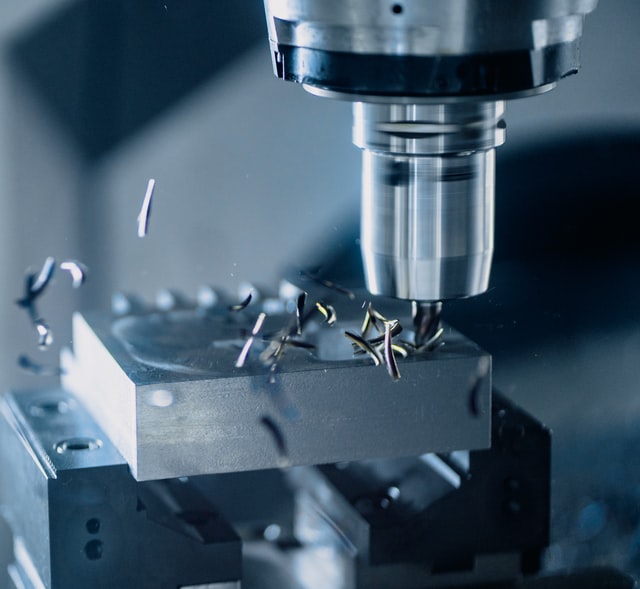
As defense components become smaller and more intricate, manufacturing challenges are on the rise. Without an effective production strategy, complex assembly configurations can trigger project delays and increased costs with a cascading effect downstream. If your tiny parts are causing big problems on the production floor, we’d like to introduce you to the antidote that can solve your defense part woes: high-end niche areas of CNC manufacturing.
In this post, we’ll profile lesser known aspects of CNC machining and CNC centerless grinding to explain how they can take your intricate parts from concept to completion – challenge-free.
What is CNC manufacturing?
Computerized numerical control (CNC) is an automated manufacturing process where pre-programmed software controls complex defense manufacturing machines, such as lathes, milling machines, grinders, and CNC routers. Once activated, a CNC system carries out the dimensional tasks programmed into the software like a robot.
CNC manufacturing is different than conventional manufacturing that requires a human operator to control the tool’s contact with raw material using buttons, wheels, and levers to produce the desired geometry. While CNC still requires highly skilled oversight, pre-programmed computer designations control the functions, and the tools don’t contact the raw material directly, making the process ideal for tiny defense parts.
Advantages of CNC manufacturing
CNC manufacturing is a solid strategy for alleviating complications of producing small defense parts, boasting several benefits, such as:
- Minimized human error
- Consistent production replication
- Increased accuracy & precision
- Enhanced part quality
- Time- and cost-effectiveness
- Compatible with a wide range of materials
Next, let’s explore two types of CNC manufacturing processes we use to produce ultra-precision defense components.

Types of CNC manufacturing processes
Are your tiny parts causing big manufacturing problems? Continue to learn how CNC machining and CNC centerless grinding can put them to rest.
CNC machining
CNC turning and milling uses high-speed computer-controlled cutting tools to remove material from a solid workpiece and reveal a finished part. With 13-axis capability, this exacting process produces tolerances to .0002,” and 8 Ra finishes.
For extremely intricate parts, micromachining is another process that combines several precision machining disciplines into one craft that can hold tolerances to microns. While not considered a CNC machining technique, it’s incredibly effective at achieving results for some projects.
It is a deep understanding of tooling and materials that allows many of the challenges in micro-sized part manufacturing to be overcome. Tiny tools, required to make tiny parts, will push away, or break if the depth of cut, feeds, speeds and tool-path are not precisely designed and controlled. This knowledge is difficult to learn from a book, or a course, and requires years….even decades of experience to master.
CNC centerless grinding
CNC centerless grinding is an ideal grinding solution for small defense parts. Primarily, a hybrid form of centerless grinding yields the best result in rising to challenges presented by micro-sized parts.
Hybrid CNC Centerless Grinding
Hybrid CNC centerless grinding is ideal for intricate and micro-sized “problem” parts. This little-known type of grinding allows extremely tight motion control over 3 axes of movement of the machine. This control, coupled with highly advanced software that allows simple programming of extraordinarily complex geometries, is a natural for overcoming the complexities of manufacturing at the micro-level.
Additionally, the machine tool can be easily reconfigured to address fine INTERNAL features. Using this aspect of the equipment super thin wall thicknesses can be achieved without crushing the parts and diameter tolerances can be held to +/- .00005” (1.2 microns).
3 Things to look for in a CNC manufacturer
Before partnering with a CNC defense manufacturer, consider the following three keys to a successful project outcome:
- Design for manufacturing (DFM) capabilities – Ensuring your manufacturer has DFM experience helps ensure your parts are designed manufacturability. DFM can enhance accuracy, reduce costs, and expedite project completion.
- Advanced equipment with experienced operators – No CNC manufacturer can succeed in producing intricate parts without the latest equipment and a skilled team of engineers and seasoned craftspeople. Contract with a partner that has both.
- Sophisticated metrology inspection equipment – Does your manufacturer have the tools to measure and prove their results? Highly sophisticated metrology equipment delivers these results with remarkable precision, a must-have for precision and accuracy.
While CNC machining and grinding are effective for untangling the intricacies of your tiny defense components, they’re not the only solutions. Reach out to our ultra-precision manufacturing team to discover more defense manufacturing capabilities designed specifically to solve the challenges facing companies like yours. As an AS9100D certified and ITAR registered defense manufacturer, we have the skill and expertise to produce seemingly impossibly small parts that drive our competitors away.